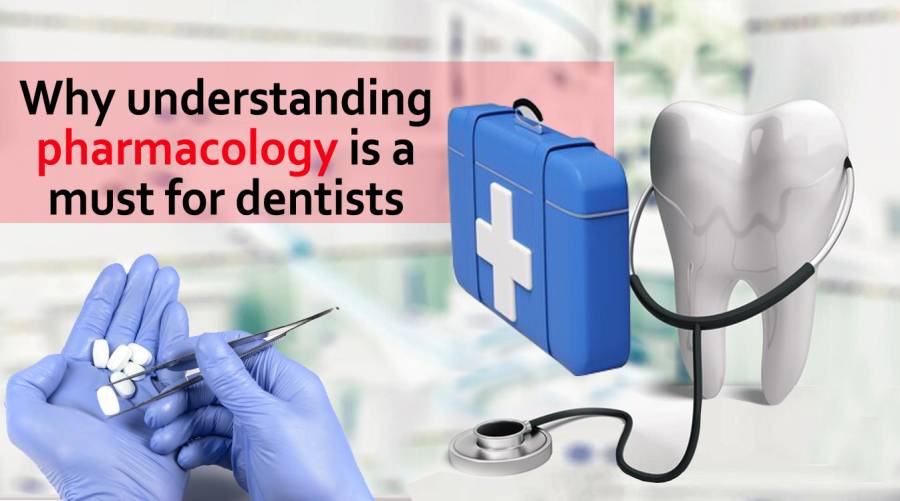
Dentistry, a medical science branch dedicated to investigating, treating, and preventing dental and oral ailments, has observed a rise in dental issues due to modern lifestyles which include factors such as increased consumption of junk food, soft drinks, while inadequate oral care in such a scenario results in dental problems, leading to a surge in visits to dentist.
Despite significant advancements in dental science, medications remain a crucial aspect of treating dental problems, either independently or as part of preoperative management, making an in-depth understanding of pharmacology essential to effectively address dental conditions.
Pharmacology, as an applied science, examines how drugs interact with the body and how the body processes them. Within dentistry, pharmacology encompasses two key aspects: pharmacokinetics and pharmacodynamics.
Pharmacokinetics deals with drug absorption, distribution, metabolism, and excretion. For a drug to be absorbed, it must be lipid-soluble, allowing it to diffuse through the epithelium and reach the capillaries. Once in the bloodstream, drugs may be either free or bound to plasma proteins, with only the unbound drug being able to reach the tissues.
Drug metabolism can result in the production of various metabolites, some of which may retain the drug's active or toxic properties. The elimination of a drug from the body depends on its route of administration and physicochemical properties.
On the other hand, pharmacodynamics focuses on drug efficacy, safety, receptor occupancy (potency), and drug interactions. Drugs interact with receptors in different ways: antagonists do not activate receptors, agonists both bind to and activate receptors, and inverse agonists stimulate inactive receptors, producing a response opposite to that of natural agonists.
The efficacy and potency of dental drugs are determined by their ability to bind to receptors and trigger the desired response. Accurate dosage calculations for various dental formulations (e.g., sprays, gargles, tablets) depend on considering these factors. It is also crucial to understand potential toxic effects and drug interactions associated with dental medications.
Dentistry employs various classes of drugs based on specific requirements. Local anesthetics, general anesthetics, and nitrous oxide are used to reduce pain perception and anxiety during dental procedures. Local anesthetics work by blocking nerve stimuli through binding to sodium channels, facilitating tooth extractions and other procedures. For pain relief, anti-inflammatory and analgesic medications, including corticosteroids, are prescribed. NSAIDs inhibit cyclooxygenase receptors, providing analgesic, antipyretic, and anti-inflammatory effects. COX2 inhibitors are preferred due to their reduced gastrointestinal side effects. Opioids serve as analgesics and sedatives, but long-term usage may lead to addiction and withdrawal symptoms.
Antibiotics and antiseptics are employed to treat conditions such as plaque, gingivitis, and oral thrush. Bacteriostatic and bactericidal antibiotics, such as penicillins and cephalosporins, are chosen based on factors like the type of infection, patient's age, medical history, and bacterial resistance. For non-prescription prevention of tooth decay in areas without water fluoridation, fluoride-containing products are used.
In conclusion, pharmacology plays a vital role in dentistry, equipping dental professionals with the knowledge and expertise to effectively utilise medications for treating various dental conditions and maintaining oral health.
XX


